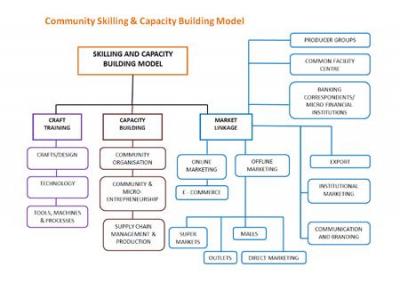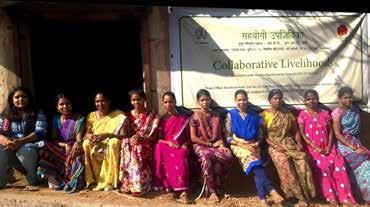

The country has been witnessing issues of sustainability in many livelihoods programme in past in different places. In most of the cases, post project period, the initiative faces challenges to become sustainable. This has been an issue with most of the development activities.
In the above context, our research group had envisaged a model as solution. After initial efforts, our group found that a model which includes an implementable market linkage as an essential component, can sustain a livelihood programme.
Under ‘Mumbai transformation: Repositioning of traditional crafts based livelihoods/crafts in a cultural capital enterprise’, a MHRD project, our group brings design innovations from IDC to the field or people at grassroots level. Through intervention, the project has enabled tribal clusters at Aarey Colony, Goregoan in Mumbai to produce craft artifacts and earn their livelihood.
Most of the tribals currently opt for alternative urban livelihoods due to the decline of income in traditional livelihoods and their inability to market their produce. The project focuses on ‘skilling and capacity building’, and most essentially establishing entrepreneurship for market linkage.
Model of community skilling and capacity building for livelihood
generation development for current initiative
The project was initiated in March 2016 and was envisaged in three phases. The first phase involved a preliminary study on tribal communities in Mumbai. More than 30 Padas (tribal village) were surveyed in this phase. Information on number of households in each Pada, percentage of tribal population, past experience in craft, livelihood options and educational backgrounds were collected and documented.
In the second phase, groups were formed; trained and capacity building activities were initiated. Workshops and training programmes were conducted in IDC as well as in the field to train the selected groups. Participants were trained to work in teams and were exposed to design, development and production. Production aspects units have been set up in two locations to start production at Khambacha Pada and Maroshi Pada. The third location is currently being established at Ultan Pada.
The third phase covers formation of producer groups, establishment of common facility centres, production, sales channel development and brand building. The project also plans to enable the groups to access capital for business through micro finance institutions (MFIs) leading to financial inclusion.
Beneficiary
The model has been implemented with two women’s groups i.e., Khambacha Pada Womens Producer Group and Maroshi Pada Womens Producer Group.
Micro-production unit
Producer groups are being developed in the selected Padas and production units have been set up. The main objective of the production unit is to eventually become self sustained. Different roles like planning of products, accounting, procurement and purchase of materials, physical and visual inspection of raw materials, treatments, strips making, quality control, dyeing, product packaging and storage will be managed by various members of the group.
Social sector response
The model has been receiving encouraging response and feedback from different stake holders in the social sector in the country. Prof Sandesh visited south Odisha on an invitation from Centre for Youth and Social Development (CYSD) Bhubaneshwar to assess feasibility of implementation of the said ‘skilling and capacity building’ model in the tribal clusters in Koraput district. Enquiries to collaborate on the lines have been received from the Forest Department agencies in Chandrapur and Gadchiroli districts of Maharashtra.
Prof. R Sandesh
